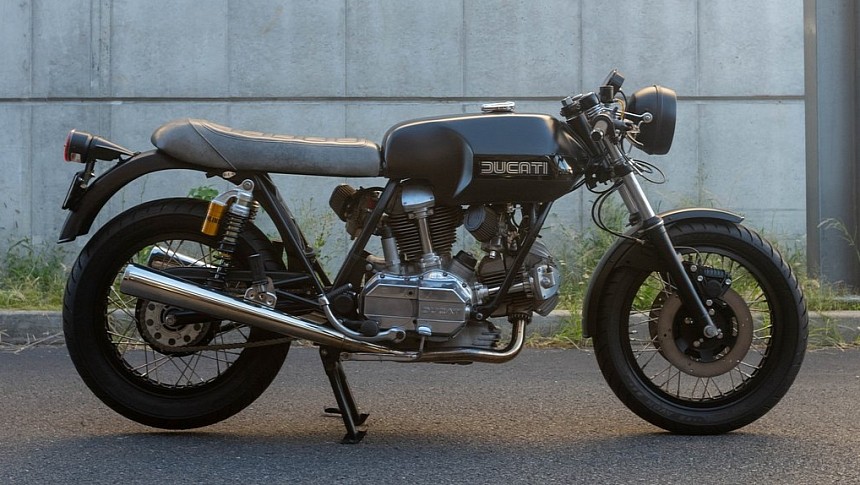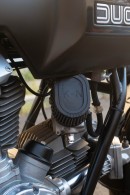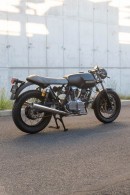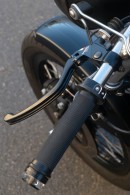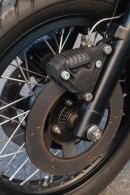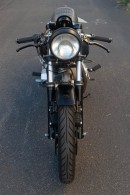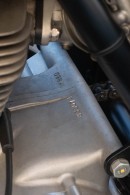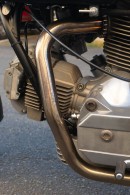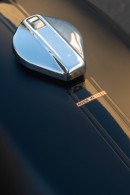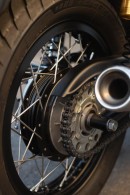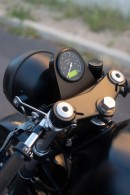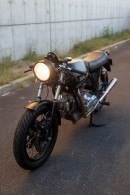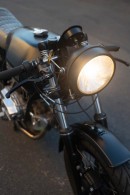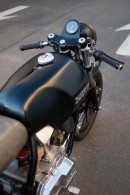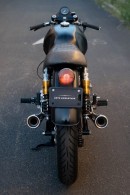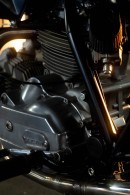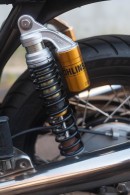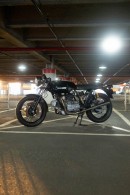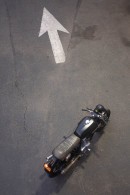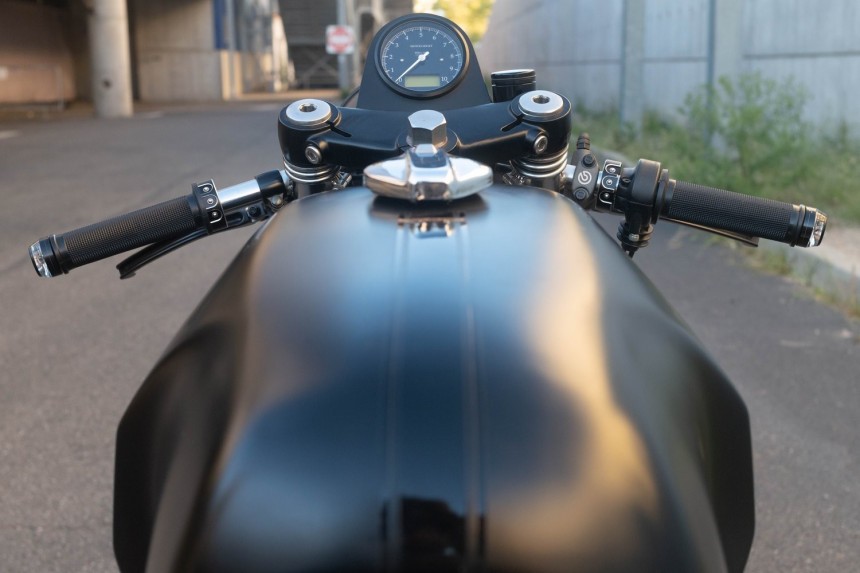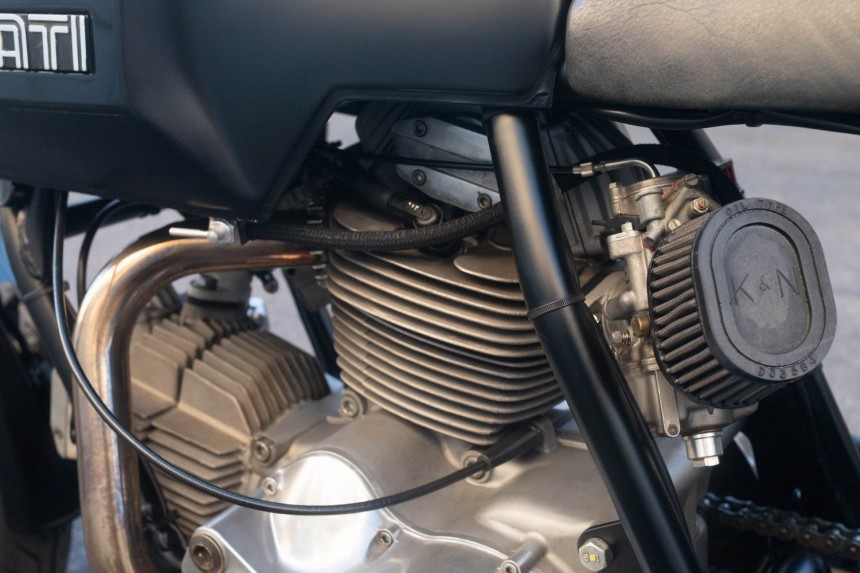If there’s someone in New York City who knows classic Italian motorcycles like the back of his hand, that would be Peter Boggia of Moto Borgotaro. The Brooklyn-based firm doesn’t just deal with bikes from Italy, but a look at its official website will quickly reveal these as being Peter’s specialty.
Not only does he restore and sell some of the coolest collectibles this southern European country had ever offered, but he also undertakes custom projects from time to time. Although Moto Borgotaro isn’t what you’d call a fully-fledged bike-modding shop, the man behind it is more than capable of building an incredible one-off.
To see what we mean, look no further than the 1979 Ducati 900 GTS which Peter turned into a stylish cafe racer. Minimalism is the name of the game on this build, and this gorgeously austere aesthetic is what the author was aiming for right from the get-go. As his sources of inspiration, Sir Boggia points to a couple of notable figures from the worlds of art and design.
First, there was Donald Judd, an American artist whose name is basically synonymous with minimalism. And secondly, Peter looked to German industrial designer Dieter Rams, best-known for his work with Braun (the consumer products brand) and the “good design” principles he established himself. Many were influenced by such principles later on, among them being one Jonathan Ive.
Between 1997 and 2019, Ive was the chief design officer at a little company called Apple; maybe you’ve heard of it. Anyway, sarcasm was obviously intended there, but we couldn’t be more serious when we say that Peter’s caffeinated GTS would probably get the nod of approval from both Judd and Rams! Without further ado, let’s take a close look at how the Moto Borgotaro treatment unfolded from start to finish.
Radical cosmetic changes weren’t the goal here, so a fair chunk of original hardware was left in play and refurbished or modified wherever necessary. After he’d performed a complete teardown, Peter got rid of any frame tabs he deemed redundant, relocated part of the electronics beneath the fuel tank, and trimmed the triple clamps to reduce visual heft up front. Moreover, a stealthy layer of black powder coating made its way onto the vintage Duc’s skeleton.
The fuel tank and both fenders – all of which are still stock – have been finished in a matte-black base with glossy highlights surrounding the Ducati tank badges. Items such as the wheels, fork lowers, and headlight bucket are also murdered-out, but Moto Borgotaro avoided going for an all-black colorway. There’s a brownish hue on the motorcycle’s new saddle, which was upholstered by leather expert Corinna Mantlo of Via Meccanica.
On the other hand, Denver-based Woody’s Wheel Works took care of revamping the footgear, and they finished it off with some grippy Avon Roadrider tires. Peter kept himself busy while the hoops were away in Colorado, rebuilding the 864cc bevel gear-driven motor with youthful seals and bearings all-round.
He didn’t need to worry about replacing any of the internals, though, because this 900 GTS rode a mere 3,047 miles (4,903 km) before making its way to Moto Borgotaro. Nonetheless, a few intake and exhaust mods were in order, so the standard carbs got swapped with 36 mm (1.4-inch) Dell’Orto units wearing K&N air filters. At the other end of the combustion cycle, there’s a shiny Staintune exhaust system taking care of gassy combustion byproducts.
Peter really went to town when it came to the bike’s running gear, aiming to bring its brakes and suspension into the 21st century. Starting with the former, he installed Brembo calipers and master cylinders, which communicate with each other via premium Spiegler brake lines. As for the suspension, the creature’s forks were revised with modern aftermarket springs from Worx.
Its rear shock absorbers have been removed altogether, making room for a pair of Ohlins substitutes with piggyback reservoirs and progressive springs. The main lighting hardware from the factory was kept in play, reconditioned, and ultimately rewired via a mo.Unit Blue control module from Motogadget’s range.
This wasn’t the only component supplied by the German aftermarket brand, as the space in the cockpit is teeming with Motogadget parts. The bar-end turn signals, minimalistic switches, and fresh tachometer have all been sourced from this manufacturer’s inventory. Brembo control levers round things out in that area, and the Motogadget dial sits inside a custom housing made from scratch.
Lastly, the 900 GTS got treated to a Silent-Hektik ignition system and Nology Pro-Fire coils for a potent spark. Once the transformation was complete, Moto Borgotaro placed this classic one-off up for sale, and it didn’t take long for an interested buyer to show up and make it their own. In order for that to happen, the new owner only had to pay a cool $30,000.
To see what we mean, look no further than the 1979 Ducati 900 GTS which Peter turned into a stylish cafe racer. Minimalism is the name of the game on this build, and this gorgeously austere aesthetic is what the author was aiming for right from the get-go. As his sources of inspiration, Sir Boggia points to a couple of notable figures from the worlds of art and design.
First, there was Donald Judd, an American artist whose name is basically synonymous with minimalism. And secondly, Peter looked to German industrial designer Dieter Rams, best-known for his work with Braun (the consumer products brand) and the “good design” principles he established himself. Many were influenced by such principles later on, among them being one Jonathan Ive.
Between 1997 and 2019, Ive was the chief design officer at a little company called Apple; maybe you’ve heard of it. Anyway, sarcasm was obviously intended there, but we couldn’t be more serious when we say that Peter’s caffeinated GTS would probably get the nod of approval from both Judd and Rams! Without further ado, let’s take a close look at how the Moto Borgotaro treatment unfolded from start to finish.
The fuel tank and both fenders – all of which are still stock – have been finished in a matte-black base with glossy highlights surrounding the Ducati tank badges. Items such as the wheels, fork lowers, and headlight bucket are also murdered-out, but Moto Borgotaro avoided going for an all-black colorway. There’s a brownish hue on the motorcycle’s new saddle, which was upholstered by leather expert Corinna Mantlo of Via Meccanica.
On the other hand, Denver-based Woody’s Wheel Works took care of revamping the footgear, and they finished it off with some grippy Avon Roadrider tires. Peter kept himself busy while the hoops were away in Colorado, rebuilding the 864cc bevel gear-driven motor with youthful seals and bearings all-round.
He didn’t need to worry about replacing any of the internals, though, because this 900 GTS rode a mere 3,047 miles (4,903 km) before making its way to Moto Borgotaro. Nonetheless, a few intake and exhaust mods were in order, so the standard carbs got swapped with 36 mm (1.4-inch) Dell’Orto units wearing K&N air filters. At the other end of the combustion cycle, there’s a shiny Staintune exhaust system taking care of gassy combustion byproducts.
Its rear shock absorbers have been removed altogether, making room for a pair of Ohlins substitutes with piggyback reservoirs and progressive springs. The main lighting hardware from the factory was kept in play, reconditioned, and ultimately rewired via a mo.Unit Blue control module from Motogadget’s range.
This wasn’t the only component supplied by the German aftermarket brand, as the space in the cockpit is teeming with Motogadget parts. The bar-end turn signals, minimalistic switches, and fresh tachometer have all been sourced from this manufacturer’s inventory. Brembo control levers round things out in that area, and the Motogadget dial sits inside a custom housing made from scratch.
Lastly, the 900 GTS got treated to a Silent-Hektik ignition system and Nology Pro-Fire coils for a potent spark. Once the transformation was complete, Moto Borgotaro placed this classic one-off up for sale, and it didn’t take long for an interested buyer to show up and make it their own. In order for that to happen, the new owner only had to pay a cool $30,000.
